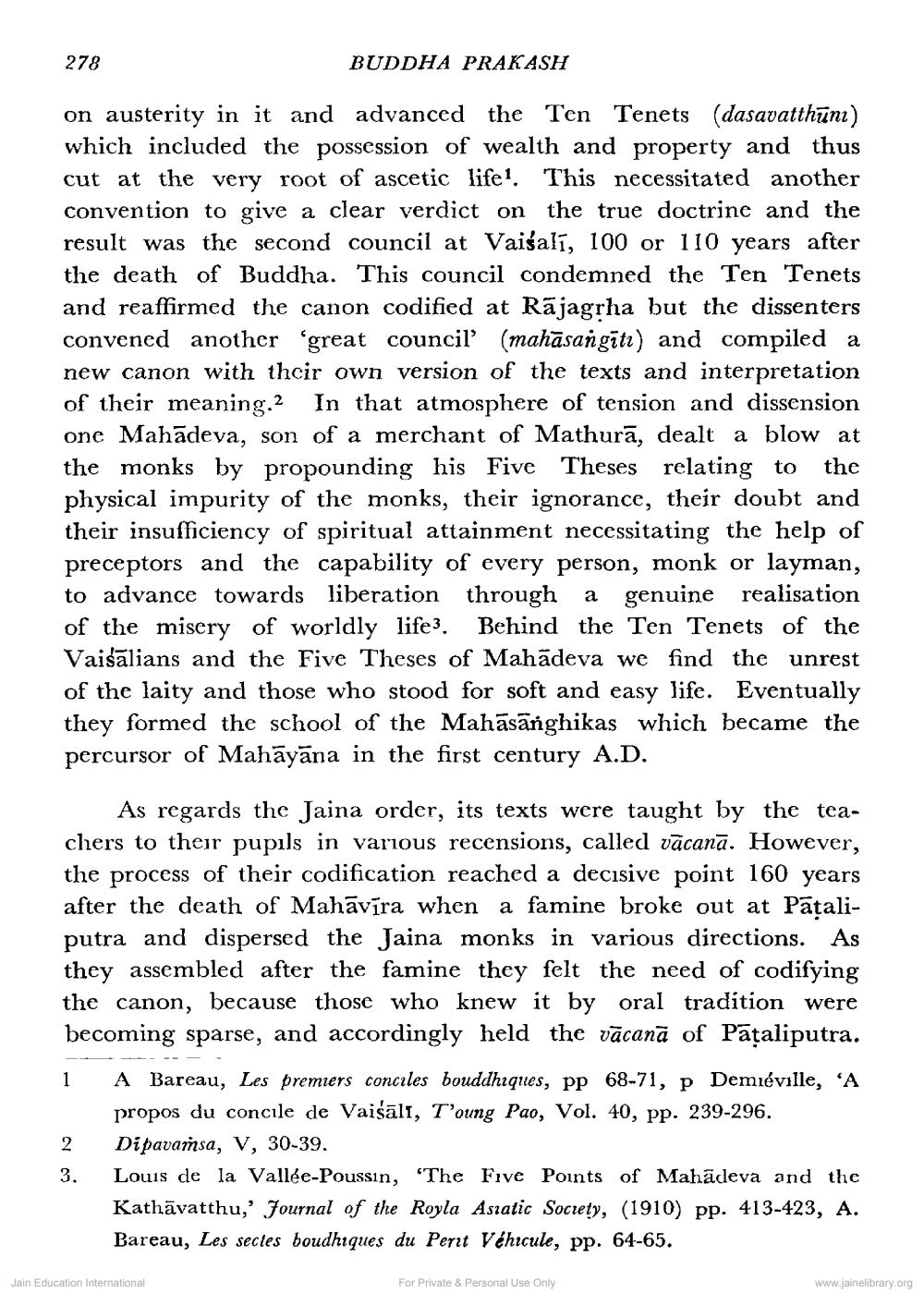________________
278
BUDDHA PRAKASH
on austerity in it and advanced the Ten Tenets (dasavatthani) which included the possession of wealth and property and thus cut at the very root of ascetic life! This necessitated another convention to give a clear verdict on the true doctrine and the result was the second council at Vaisalī, 100 or 110 years after the death of Buddha. This council condemned the Ten Tenets and reaffirmed the canon codified at Rājagrha but the dissenters convened another great council (mahāsangiti) and compiled a new canon with their own version of the texts and interpretation of their meaning. In that atmosphere of tension and dissension one Mahādeva, son of a merchant of Mathurā, dealt a blow at the monks by propounding his Five Theses relating to the physical impurity of the monks, their ignorance, their doubt and their insufficiency of spiritual attainment necessitating the help of preceptors and the capability of every person, monk or layman, to advance towards liberation through a genuine realisation of the misery of worldly life3. Behind the Ten Tenets of the Vaiśālians and the Five Theses of Mahādeva we find the unrest of the laity and those who stood for soft and easy life. Eventually they formed the school of the Mahāsānghikas which became the percursor of Mahāyāna in the first century A.D.
As regards the Jaina order, its texts were taught by the teachers to their pupils in various recensions, called vācanā. However, the process of their codification reached a decisive point 160 years after the death of Mahāvīra when a famine broke out at Pataliputra and dispersed the Jaina monks in various directions. As they assembled after the famine they felt the need of codifying the canon, because those who knew it by oral tradition were becoming sparse, and accordingly held the vācană of Pāțaliputra. 1 A Bareau, Les premiers conciles bouddhiques, pp 68-71, p Demiéville, 'A
propos du concile de Vaiśāli, T'oung Pao, Vol. 40, pp. 239-296. Dipavamsa, V, 30-39. Louis de la Vallée-Poussin, 'The Five Points of Mahadeva and the Kathāvatthu,' Journal of the Royla Asiatic Society, (1910) pp. 413-423, A. Bareau, Les sectes boudhiques du Pent Véhicule, pp. 64-65.
Jain Education International
For Private & Personal Use Only
www.jainelibrary.org




